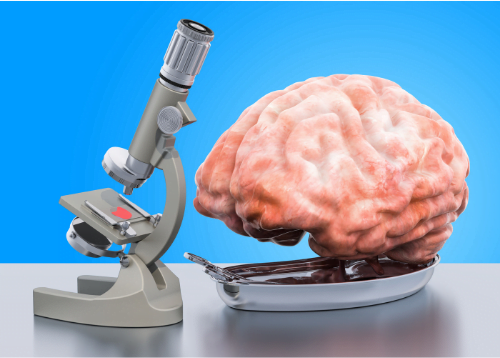New research about the causes of dementia and possible preventative methods looks promising. One main focus of research relating to Alzheimer’s is amyloid beta and tau proteins. Amyloid beta proteins are amino acid chains that make up amyloid plaques in the brains of people with Alzheimer’s disease. Tau proteins are mainly found in neurons and are linked to numerous brain diseases. Understanding these two proteins and their function in the brain is often considered the key to determining the pathology of Alzheimer’s.

New tests for detecting Alzheimer’s are being developed, including blood tests. One focus of the new tests is the tau protein, as opposed to the often-studied amyloid beta. Tests targeting the tau protein may be better at tracking the progression of Alzheimer’s disease. For example, Quanterix’s Simoa assay is a blood test that works similarly to tests that utilize spinal fluid or positron emission tomography (PET) scans. These new tests are important in more accurately identifying Alzheimer’s Disease.2 Blood tests targeting the tau protein may help identify Alzheimer’s Disease at early stages.1
Most recently, a treatment for Alzheimer’s disease was identified involving a repurposed ADHD medication. In a study, atomoxetine, the ADHD medication, was shown to reduce levels of the tau protein. This drug is FDA approved and considered safe for consumption. Should the drug be approved for Alzheimer’s treatment, it would help to prevent the progression of the disease at an early stage.3
Aside from Alzheimer’s research, advancements are being made towards Parkinson’s disease diagnosis. Parkinson’s disease, although not directly a form of dementia, often leads to dementia as it worsens. Researchers at Oxford Parkinson’s Disease Centre (OPDC) are working on a new test to identify Parkinson’s disease at an early stage, and then differentiate symptoms of Parkinson’s disease with symptoms of muscle atrophy or essential tremor. Because of the similarities between symptoms of all three conditions, it is easy to incorrectly diagnose Parkinson’s disease as either muscle atrophy or essential tremor. The potential test developed by OPDC requires taking a cerebrospinal fluid sample from the lower spine and mixing it with specially tagged proteins to see how they react. Researchers are looking for whether or not protein clumps associated with Parkinson’s disease grow. This new test needs further research to support its implementation but is a promising new method for detecting early stages of Parkinson’s disease.2
These three potential breakthroughs are a promising start to 2022, a year in which hopefully many more advances will be made in the direction of dementia diagnosis, prevention and treatment.
References
- Hale, C. (2020, July 28). Alzheimer’s blood tests show New promise, giving decades of early warning. FierceBiotech. Retrieved December 2021, from https://www.fiercebiotech.com/medtech/alzheimer-s-blood-tests-show-new-promise-giving-decades-early-warning
- Hale, C. (2021, December 22). 2022 forecast: Blood test breakthroughs set to move the needle in alzheimer’s, parkinson’s research. FierceBiotech. Retrieved December 2021, from https://www.fiercebiotech.com/medtech/blood-test-breakthroughs-aim-to-move-needle-alzheimer-s-parkinson-s-research
- Quah, M. (2021, December 23). Dementia: Old medication could offer new treatment for alzheimer’s – major study finding. Express.co.uk. Retrieved December 2021, from https://www.express.co.uk/life-style/health/1540417/dementia-symptoms-alzheimers-old-medication-adhd-treatment
